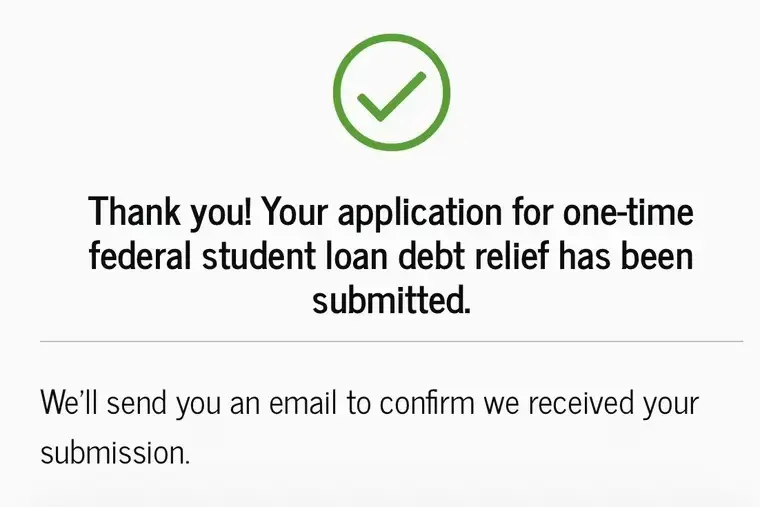
The burden of student loan debt affects everyone: families, individuals, and the government. The student loan debt crisis has been an ongoing concern for many years, and the COVID-19 pandemic has only made the situation worse. As a result of the global COVID pandemic, several people lost their employment and had financial troubles as a result of the quarantines, lockdowns, business closures, school and college closures, and other measures that were required. The COVID-19 pandemic was the worst time for the student loan debt crisis – student loan debt climbed by only 6% annually from 2015 to 2019 according to Experian data, but since the pandemic began, that rate has doubled. The total amount of outstanding student loan debt in the United States was over $1.57 trillion, a new high, with a $166 billion rise year over year – the overall student loan balance climbed by 12%. As a result of students not making loan payments, individual balances reached a record-high of $38,792, an increase of more than $3,000 per borrower. On March 27, 2020, the CARES Act was signed into law as an emergency relief bill, which the government has since implemented – in March 2020, the administrative forbearance period started; it froze collections on defaulted debts on the majority of federally held student loans through September 30, 2020, suspended loan payments, and set an interest rate of 0%. 72% of student loan accounts were reported to be in forbearance or deferment, per Experian data from Q3 2020. These 72% of accounts alone contained paused student loan debt totaling close to $1.1 trillion. Student loan payments have been since been paused/halted seven more times. The amount of government higher education financing for the COVID pandemic relief for the nation’s colleges and universities in 2020 and 2021 was $69 billion, which set a new record. With $9.5 billion, California received the most assistance.
In August, the current administration also unveiled a plan to reduce student loan debt, promising to forgive up to $10,000 in federal debt for eligible students and up to $20,000 for those who qualified and got a Pell Grant in college. Families with federal student loan debt that are on a lower or intermediate income can get assistance through the student debt reduction program. If one’s adjusted gross income is no more than $125,000 for an individual or $250,000 for a household, they are qualified for relief (based on 2020 or 2021 tax return). However, private student loan borrowers are ineligible for cancellation, and the same applies to federal student loans obtained after June 30, 2022. Although the debt relief plan forgives about $300 billion, there is still $1.4 trillion in unpaid debt owed by Americans. Even with loan forgiveness, there is still a gap for students to fill: 73% of those pursuing bachelor’s degrees have unaddressed needs of more than $9,000 on average.
Congress enacted its most comprehensive bill in a decade in 2008 to increase oversight of universities that burden students with debt. It tightened rules that prevent higher education institutions from taking part in federal student aid programs if too many of their borrowers fall behind on their payments after they graduate. In particular, it extended the amount of time for tracking loan outcomes to three years instead of two years which is a more difficult test, since it required institutions of higher education to keep borrowers out of default for a longer period of time. Struggles with student loans continue, and many current techniques meant to raise red flags can be manipulated and miss some issues. The current administration is anticipated to further scrutinize the for-profit institutions through regulations, including actions like preventing institutions from receiving federal student aid funds if an excessive number of their graduates have less income to repay their loans.
The government, industries, and society must do more to support students by contributing more money towards grants, scholarships, and other non-repayable types of aid. In 2021, grants and scholarships covered more than 25% of the typical student’s tuition costs. It is crucial that families are aware of various funding possibilities, and this financial literacy/education responsibility should be appropriated to the government, financial institutions, and schools, to ensure that the most amount of people can benefit from the same.
We have seen on a national level that low-income students are increasingly confronted with issues including growing college costs, stagnant family income, and diminishing federal grant help and state financing, which calls for broad reforms. Higher education in America has traditionally served as a step on the ladder of opportunity, promoting social mobility and wealth creation. The benefits of a college education in terms of employment and income have consistently outpaced the wages of those without degrees, and increased job creation and opportunities with higher wages can encourage more high school students to pursue higher education despite the debt burden that comes with it.
The student loan debt crisis has been brought to light as a result of the pandemic, and both the public and private sectors are now aware of its depth and spread. Numerous policy changes, such as adjustments to the Income-Driven Repayment and Public Service Loan Forgiveness schemes, are being made in an effort to lower monthly payments as well as repayment obligations.
Additionally, five states (Maryland, Washington, California, Pennsylvania, and New Jersey) have now passed legislation banning the practice of financial aid displacement, also known as scholarship displacement (reducing a student’s financial aid package when the student receives money from a private scholarship), making it illegal to reduce a student’s financial aid package when they receive money from outside scholarships, and requiring that their public colleges and universities assist students in maximizing their scholarship dollars.
Higher education institutions are receiving significant funding from federal and state governments: higher education institutions made a combined $1.068 trillion in revenue from federal and non-federal funding sources in 2018, according to the U.S. government’s DataLab. Federal investments/funding were $149 billion and included contracts ($10 billion), grants ($41 billion), and student aid ($98 billion), accounting for 3.6% of all federal spending. Additionally, state financing and support for higher education have increased by 21.4% since 2017, according to the State Higher Education Executive Officers Association’s (SHEEO) most recent Grapevine report. For the 2022 fiscal year, states together allocated $105.5 billion for higher education institutions. Therefore, the amount of governmental funding to higher education institutions is likely not the sole issue causing the increased need for students to take out loans to pay for their college education; there is a more pressing and fundamental problem.
Higher education should be effective and affordable for everyone given the significant funding provided by the federal and state governments, but this is not the case, likely due to gaps in the educational system, government spending, job opportunities, wages, and policies, as well as our unmet expectation that colleges and universities will adequately prepare students for life after graduation. Congress and the current administration have been forced to take action because of the growing student loan debt crisis, but the issue is so complicated that even if all current student loans were cancelled under the higher education system and policies in place today, the next generation would still experience a worsening student loan debt crisis. The difficulty facing policymakers today is striking the right balance between providing people with access to educational opportunities and managing the risks of burdening taxpayers and loan borrowers with the costs if they are not able to directly benefit from their educational opportunities (in the form of a higher-paying job), which could potentially have a long-term negative financial impact on people’s lives and the nation’s economic growth. However, what is evident, is that an effective solution is certainly needed.


 Raj Mehta – Financial Education Instructor
Raj Mehta – Financial Education Instructor